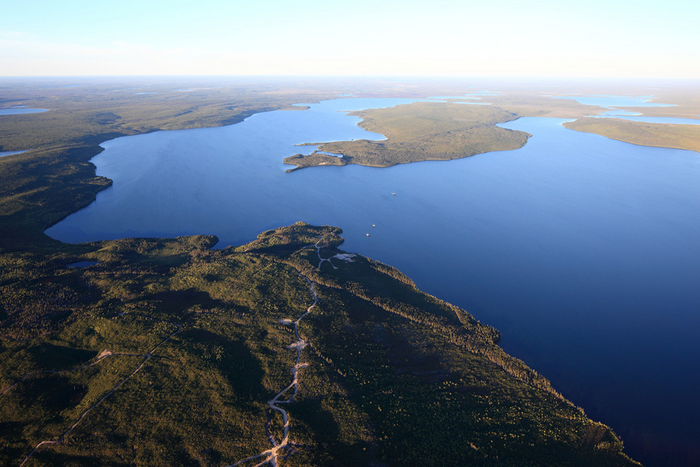Dundee uranium guru Dave Talbot did little to hide his excitement for Fission Uranium's drill results yesterday, titling an update to the firm's clients, "Wow. This is New. Another Zone and New Target Areas."
Reminds me of a certain double rainbow...
Only weeks into the summer drill season Fission Uranium has already hit some big numbers and new discoveries at its PLS project in the Southwest Athabasca region of Northern Saskatchewan, Canada. Those hits include yesterday’s news, which gives a strong indication of a potential second zone to the north of the established boundaries and a thickening of the main zone to the east.
The headline hole from yesterday’s results is PLS14-248, which returned 106.2 meters of composite mineralization including 21.2 meters at more than 10,000 counts per second (cps). The company has actually been forced to upgrade its scintollometer to the RS-121, which measures up to 65,000 cps, because the previous model couldn’t measure past the 10,000 cps that numerous intercepts have already hit this season.
Hole 248 falls on the eastern side of a fault, which was previously thought to be lower grade but continues to prove those expectations wrong. The hole follows up on hole 230 announced last week that hit 128 meters of composite mineralization in the area, including 6.1 meters above the 10,000 cps threshold.
But nowhere is the increased potential of PSL more evident than in exploration holes PLS14-237 and PLS14-236, which hit mineralization about 90 meters apart, both north of the established zone. Hole 236 is still an isolated hit, but Fission drilled 237 to follow up on the 224 hole that it released last week that hit a new, parallel zone about 50 meters north of the current zone boundaries.
Dundee said in a note that “The northern zone already appears to strike for 90m. That opens up tremendous strike length to go back and test…irrespective of the potentially strong grades and thicknesses found in hole -248 which should get investors excited in its own right, today’s news is big and brings forth several ideas on where to test to come up with further uranium mineralization.”
Fission Uranium has already established PLS as an 855-metre long zone just southwest of the Athabasca Basin, and the summer season is designed mostly to drill out the zone to produce a first resource estimate by the end of the year with a $20-million, 20,000-metre drill program.
The latest results add to some solid winter drill results on the lake-bed deposit, which include PLS14-129 that hit 100 meters of mineralization, including 38.49% U3O8 over 10.5 meters.
Dundee said hole 129 was “The best hole ever drilled at PLS, and potentially second best deposit leading hole’ ever in the Athabasca Basin.”
Even before the latest results, analysts were calling Fission Uranium a takeover target. In December Raymond James analyst David Sadowski called the PLS target a low-cost, expandable discovery that is also the last known “high grade, easily open-pittable uranium asset left un-mined in the world.”
The latest results only further emphasize the project’s potential, both as a high-grade resource and one that has significant potential for growth. Dundee has now put out a price target of $2.10 on the stock with a buy recommendation.
Fission's share price, however, didn’t move much on the latest results, closing down $0.02 at $1.26 with 353 million shares out. But it still trades above the one-year low of around $1 it hit in January.
Here's the press release: 7 Summer Angle Holes Hit Off Scale Widening Zone R780E North and South






















